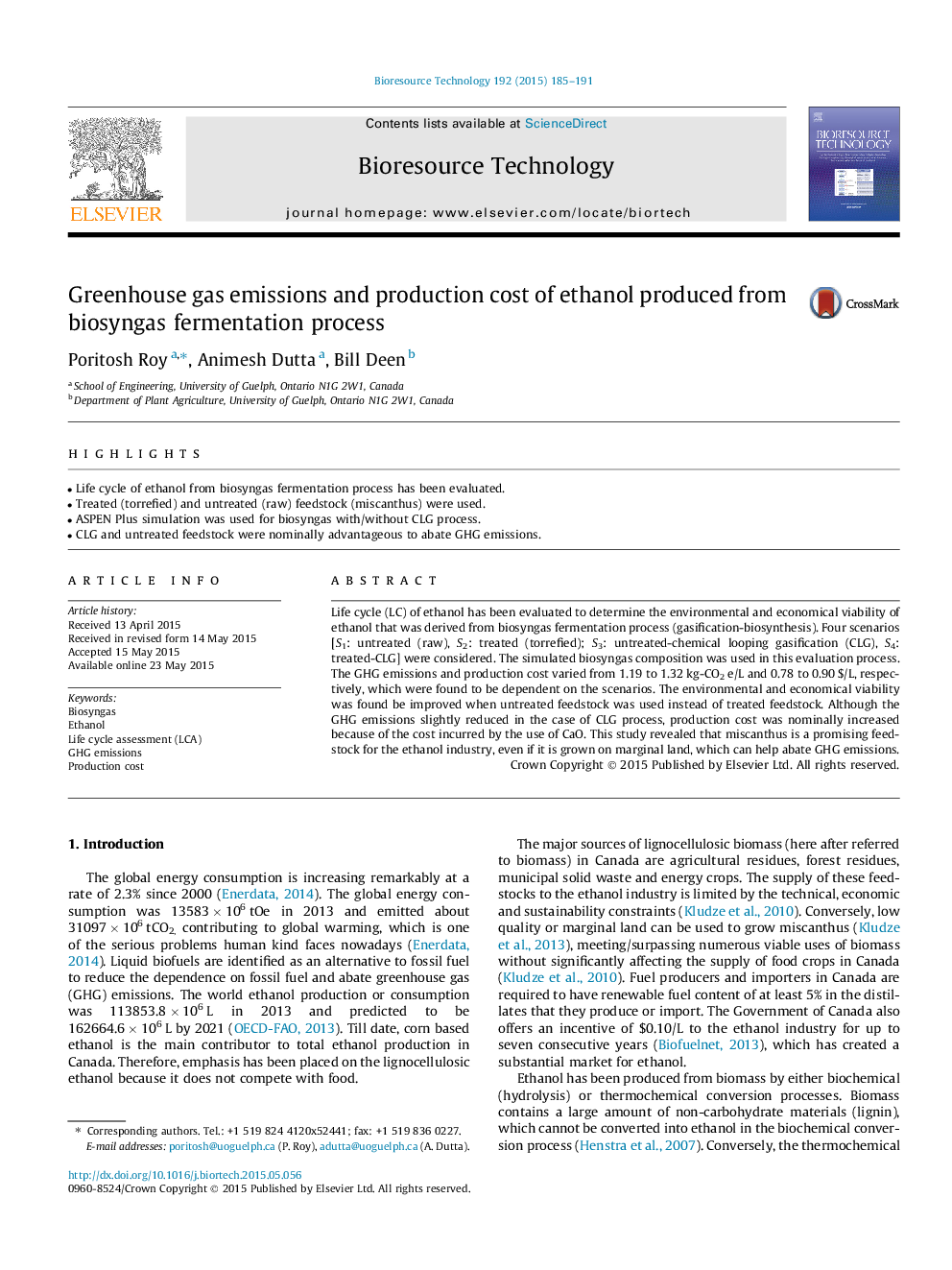| Article ID | Journal | Published Year | Pages | File Type |
|---|---|---|---|---|
| 7074400 | Bioresource Technology | 2015 | 7 Pages |
Abstract
Life cycle (LC) of ethanol has been evaluated to determine the environmental and economical viability of ethanol that was derived from biosyngas fermentation process (gasification-biosynthesis). Four scenarios [S1: untreated (raw), S2: treated (torrefied); S3: untreated-chemical looping gasification (CLG), S4: treated-CLG] were considered. The simulated biosyngas composition was used in this evaluation process. The GHG emissions and production cost varied from 1.19 to 1.32Â kg-CO2Â e/L and 0.78 to 0.90Â $/L, respectively, which were found to be dependent on the scenarios. The environmental and economical viability was found be improved when untreated feedstock was used instead of treated feedstock. Although the GHG emissions slightly reduced in the case of CLG process, production cost was nominally increased because of the cost incurred by the use of CaO. This study revealed that miscanthus is a promising feedstock for the ethanol industry, even if it is grown on marginal land, which can help abate GHG emissions.
Related Topics
Physical Sciences and Engineering
Chemical Engineering
Process Chemistry and Technology
Authors
Poritosh Roy, Animesh Dutta, Bill Deen,
